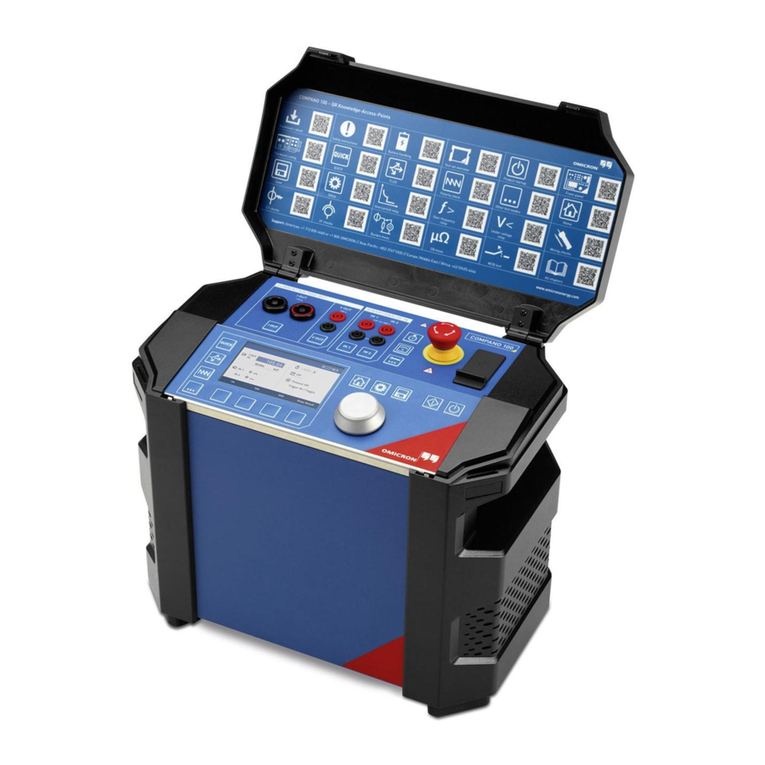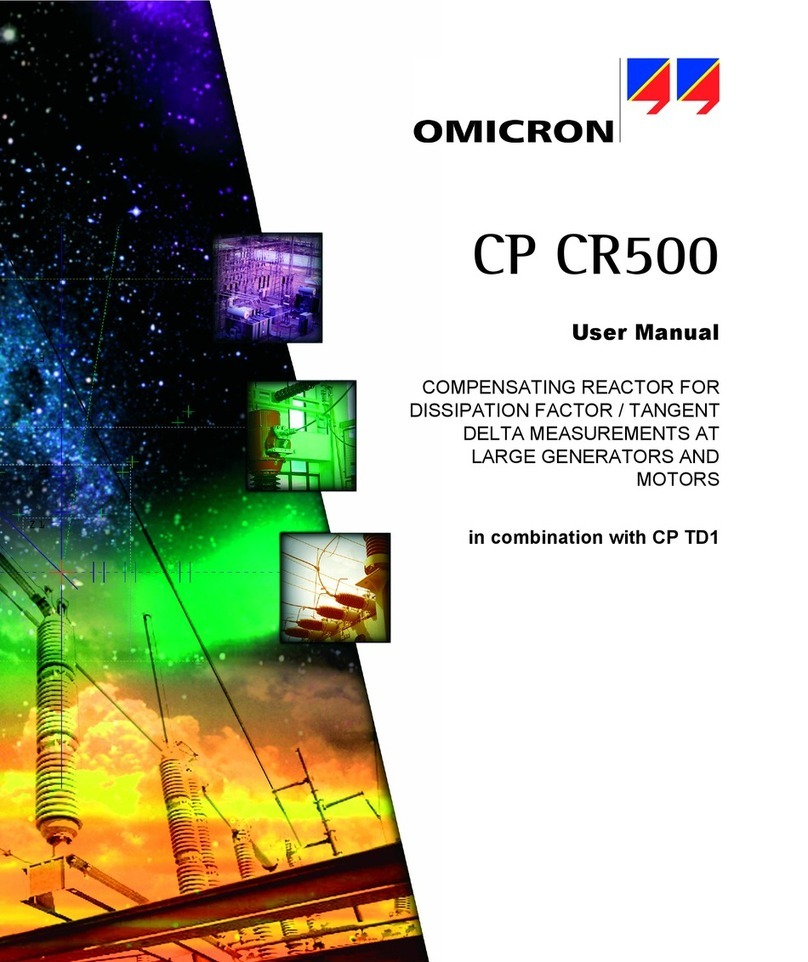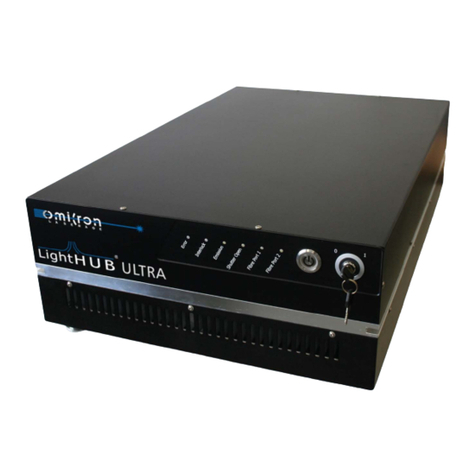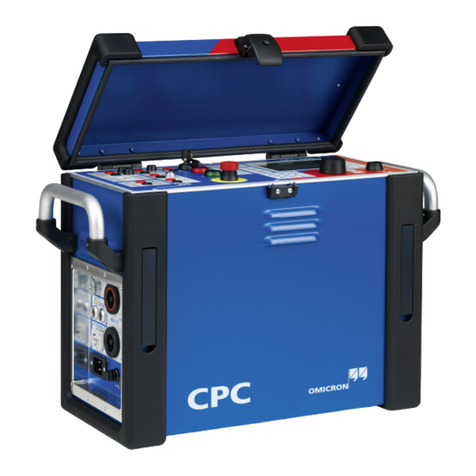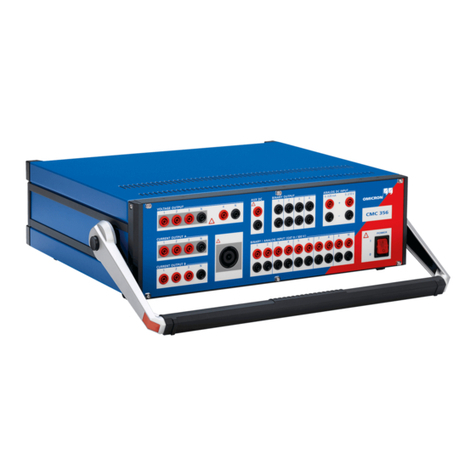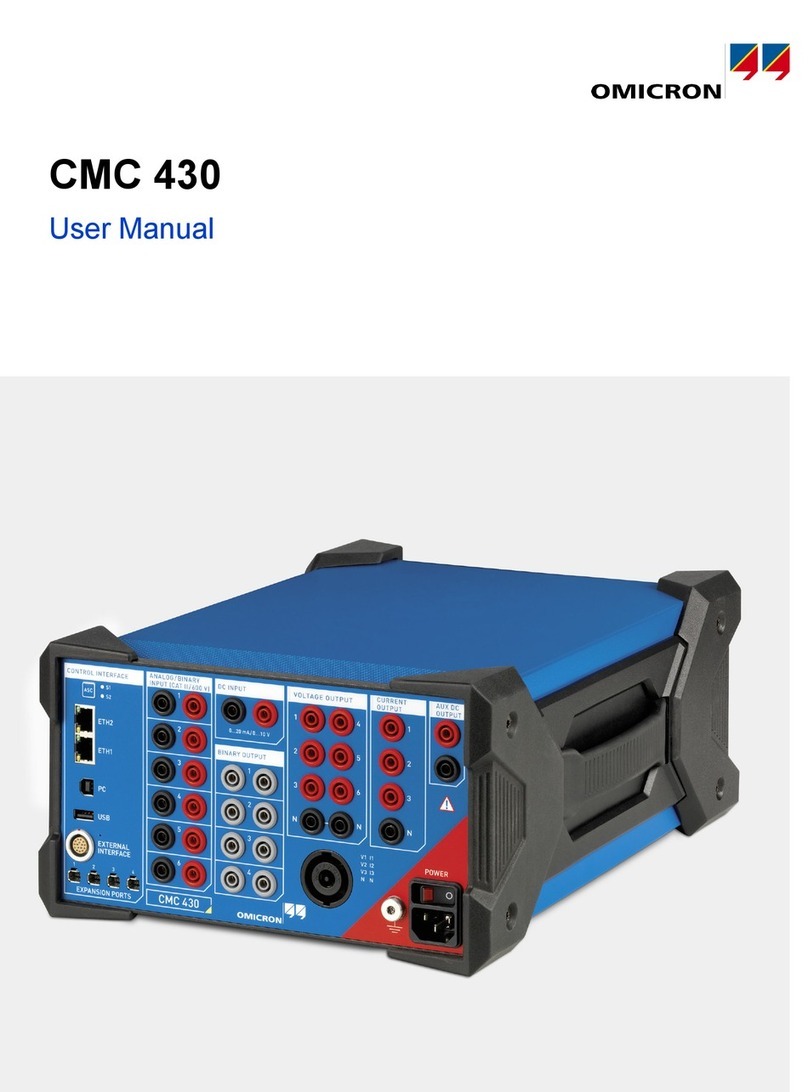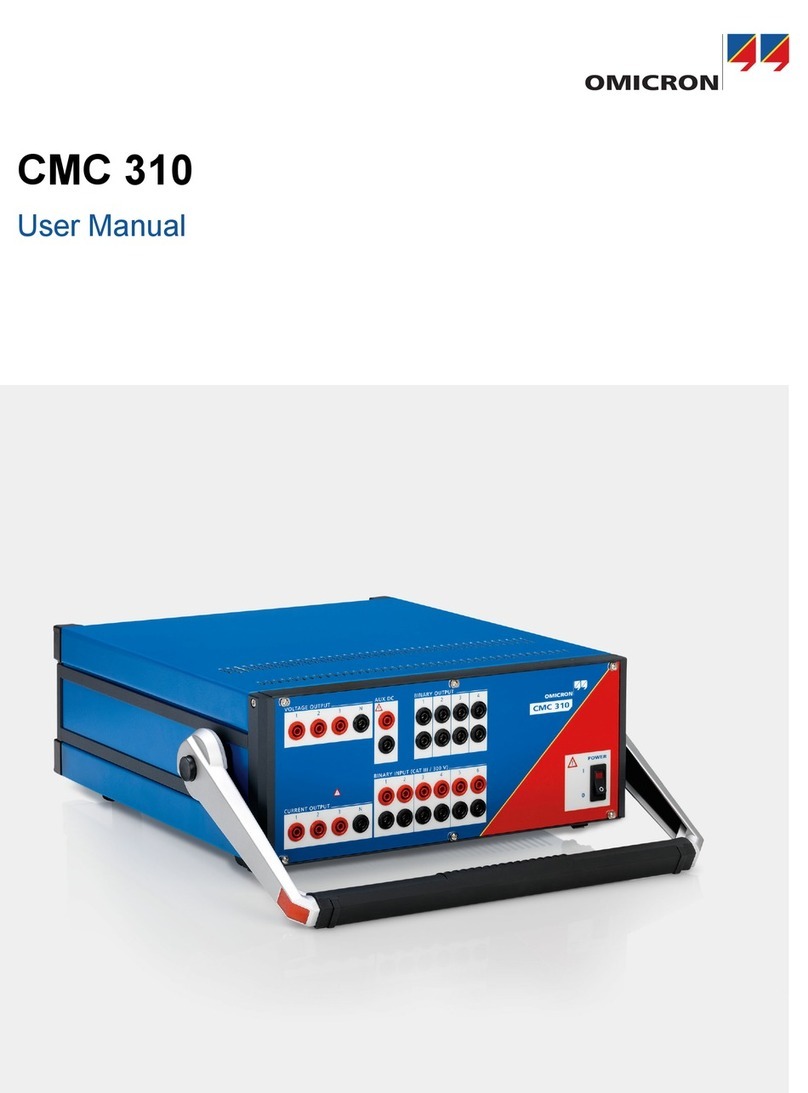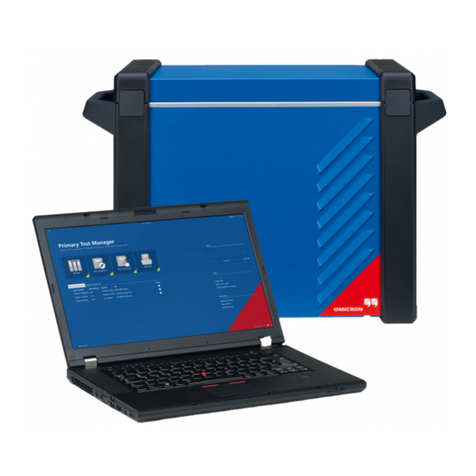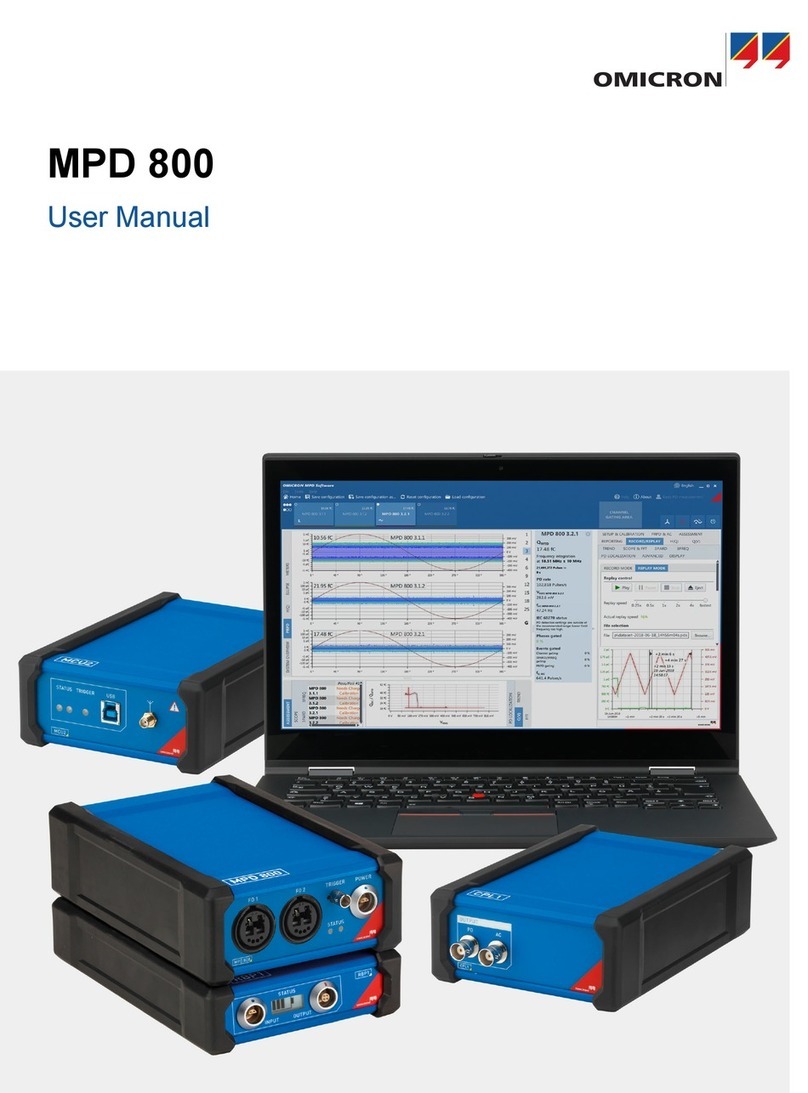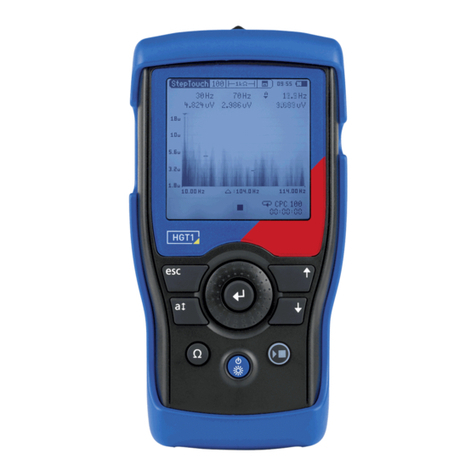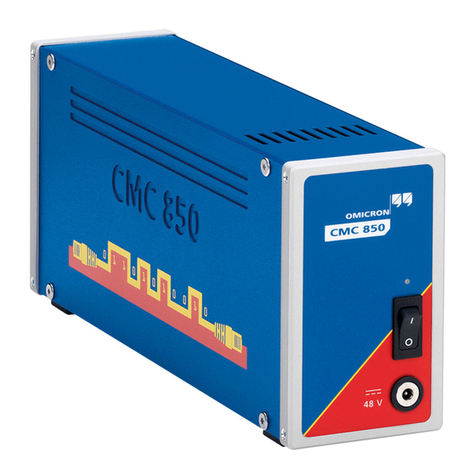CPC 100 V 3.20
Preface - 1
The purpose of this User Manual is to get you started quickly. It guides you directly to the various
CPC 100 application fields, shows the typical test setup, the corresponding CPC 100 test card,
and outlines the parameters used for this test in a compact form.
Since the scope of this User Manual is confined to the most important information about a
specific subject, the CPC 100 User Manual complements the CPC 100 Reference Manual,
however, it does not replace it. The CPC 100 Reference Manual is available in PDF format on
the CPC 100 Toolset CD-ROM and the CPC 100 Start Page.
Reading the CPC 100 User Manual alone does not release the user from the duty of complying
with all national and international safety regulations relevant for working with the CPC 100, for
example, the regulation EN50191 “Erection and Operation of Electrical Test Equipment” as well
as the applicable regulations for accident prevention in the country and at the site of operation.
Conventions and Symbols Used
In this manual, the following symbols indicate safety instructions for avoiding hazards.
The CPC 100 must be used in observance of all existing safety requirements from national
standards for accident prevention and environmental protection. Before operating the CPC 100,
read the following safety instructions carefully. Do not turn on or use the CPC 100 if you do not
understand the information in this manual. If any of the safety instructions are unclear, contact
OMICRON electronics.
Principle Use According to Regulations
►Only use the CPC 100 in a safe manner and in accordance with the regulations, and follow
the instructions in the User Manual. Make sure that the CPC 100 is in a technically sound
condition. In particular, avoid disruptions that could affect safety.
►The CPC 100 is exclusively intended for the application fields specified in detail in
”Designated Use” on page Preface-2. Any other use violates the regulations. The
manufacturer/distributor is not liable for damage resulting from improper usage. The user
alone assumes all responsibility and risk.
►Follow the instructions provided in this User Manual and in the CPC 100 Reference Manual
available in PDF format on the CPC 100 Toolset CD-ROM and the CPC 100 Start Page in
order to work in accordance with the regulations.
►Do not open the CPC 100 housing.
►If you do not use the CPC 100 anymore, turn the safety key to “lock” (vertical) and remove
the key to avoid anybody accidentally turning on the CPC 100.
►Store the key and the CPC 100 separately to prevent unauthorized personnel from using the
CPC 100.
►If you have a cardiac pacemaker, do not use the CPC 100.
►Before operating the CPC 100, make sure there is no person with a cardiac pacemaker in
the immediate vicinity.
Orderly Measures
►This User Manual only complements the CPC 100 Reference Manual available in PDF
format on the CPC 100 Toolset CD-ROM and the CPC 100 Start Page. However, it does not
replace it.
►Either this User Manual or the CPC 100 Reference Manual should always be available on
the site where the CPC 100 is being used.
►Personnel assigned to use the CPC 100 should carefully read the CPC 100 User Manual/
Reference Manual - in particular the section on safety instructions - before beginning to work
with it. On principle, this also applies to personnel who only occasionally work with the
CPC 100.
►Do not undertake any modifications, extensions, or adaptations to the CPC 100.
►Use the CPC 100 in conjunction with original accessories only.
Operator Qualifications and Primary Responsibilities
Testing with the CPC 100 should only be performed by authorized and qualified personnel.
Clearly establish the responsibilities. Personnel receiving training, instruction, direction, or
education on the CPC 100 should remain under the constant supervision of an experienced
operator while working with the equipment.
Safe Operation
When putting the CPC 100 into operation, follow the instructions in section “Putting CPC 100
into Operation” in the CPC 100 Reference Manual (available in PDF format on the
CPC 100 Toolset CD-ROM or the CPC 100 Start Page).
►Never use the CPC 100, any accessory or the CP TD1 equipment trolley without a solid
connection to earth with at least 6 mm².
►Use a ground point as close as possible to the operator.
DANGER
Death or severe injury will occur if the appropriate safety instructions are not
observed.
WARNING
Death or severe injury can occur if the appropriate safety instructions are not
observed.
CAUTION
Minor or moderate injury may occur if the appropriate safety instructions are not
observed.
NOTICE
Equipment damage or loss of data possible
About this User Manual Safety Instructions for the CPC 100 and its Accessories
Preface
